Saran’s Alley – Preservation and Instigator’s Ambition
The 56th Studio’s Creative Director, Saran Yen Panya, is an internationally known artist, designer and visual storyteller famous for his out-of-the-box thinking. Here, Saran shares his thoughts about his new tea joint, ‘Citizen Tea Canteen,’ and offers a glimpse into his renegade mind.
The spot Saran Yen Panya selected for his new tea house says pretty much everything about this “storytelling” designer. The 60-plus-year-old shophouse in a narrow labyrinth alleyway in Talad Noi sits right next to the old community’s Chinese monastery.
He matched his second-floor paint with the colours of the monastery’s roof, which we see through the window. The place is kind of summing-up of his whole creative endeavour until now, as well as an indication of his future. Stuff from his previous projects, what’s happening with him at the moment, and the goal he’s always been pushing hard are all scrambled colourfully inside.
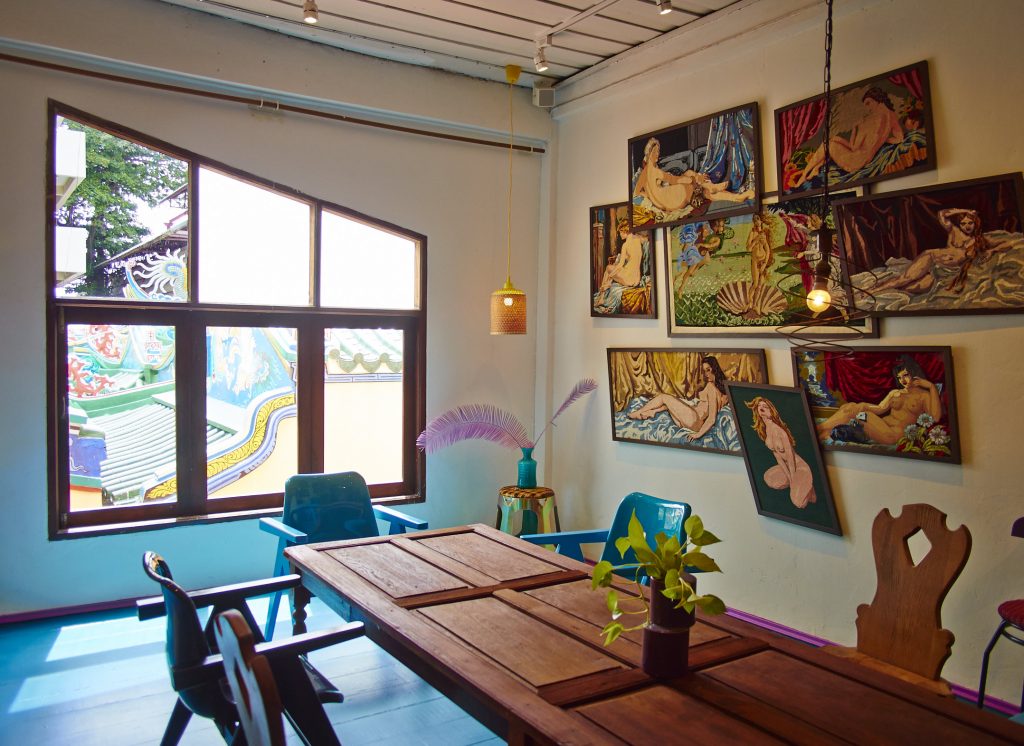

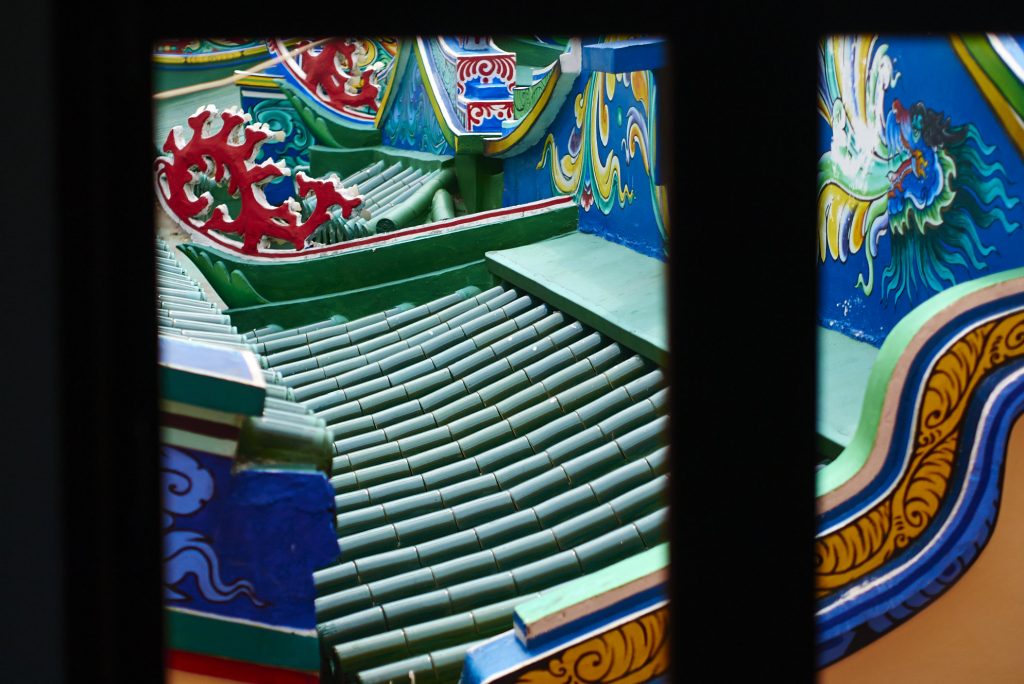

Q: Tell us about this tea place.
A: This place is called “Citizen Tea Canteen.” It’s an extension of the handicraft brand I’ve been working on for three years called “Citizen of Nowhere.” As we acquired enough product items, we needed a space for clients to experience them a little more intimately, rather than just buying goods online. Then I started to think about a vibrant and lively showroom, with some kind of service or activity. After researching for six months, I found that the “Kopi,” or old Chinese cafe culture, has been very hard to find these days, except for in the south. We wanted to deconstruct the old Kopi culture to create a new variant. But there are way too many coffee places going on, so it’s better if we focus on Thai tea. That’s how this tea place happened, mixed with the handicraft showroom.
The concept is about “empowering” Thai farmers. We choose tea that is grown here in Thailand, and the tea master is also Thai. There is a tea blended called “Ped Toon Chao Ta,” which was inspired by the duck noodle shops around here. Everywhere we open will have its own story. We have four blends. No. 1 is a little bit caramel, No. 2 is a kind of handsome gentleman like James Bond, No. 3 is like a sweet girl with a little vanilla, and No. 4 is the sun-dried banana taste.
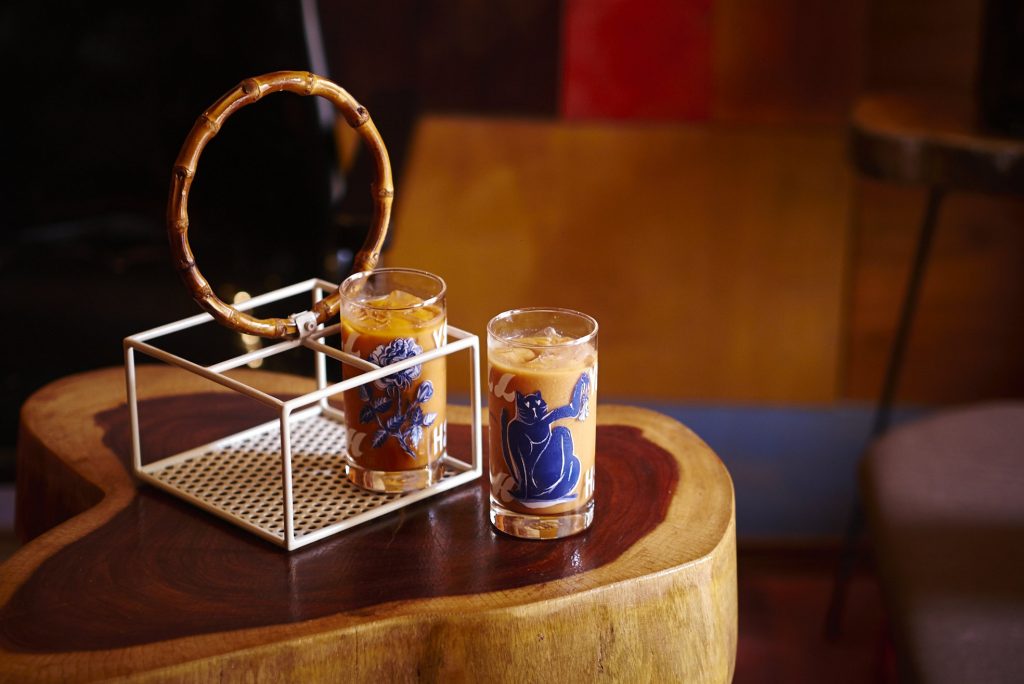

Q: Give us some more details about this place.
A: It’s about trying to empower the underdogs. What is left behind, what is forgotten, like the coffee condiment carrier. Kids today have no idea what coffee or tea served in a condiment carrier looks like. So we redesigned it. The teacup, we got from a craftsman on Koh Kred, Nonthaburi. The pot we got from an old shophouse in Yaowaraj (China Town). For the glass, we used an old-school screening technique, rotary print, like silkscreen. For the labels on bottles, we used fabric made from recycled plastic. The wallpaper is all handmade silkscreen. Insanely detailed, I would say. (Big laugh).
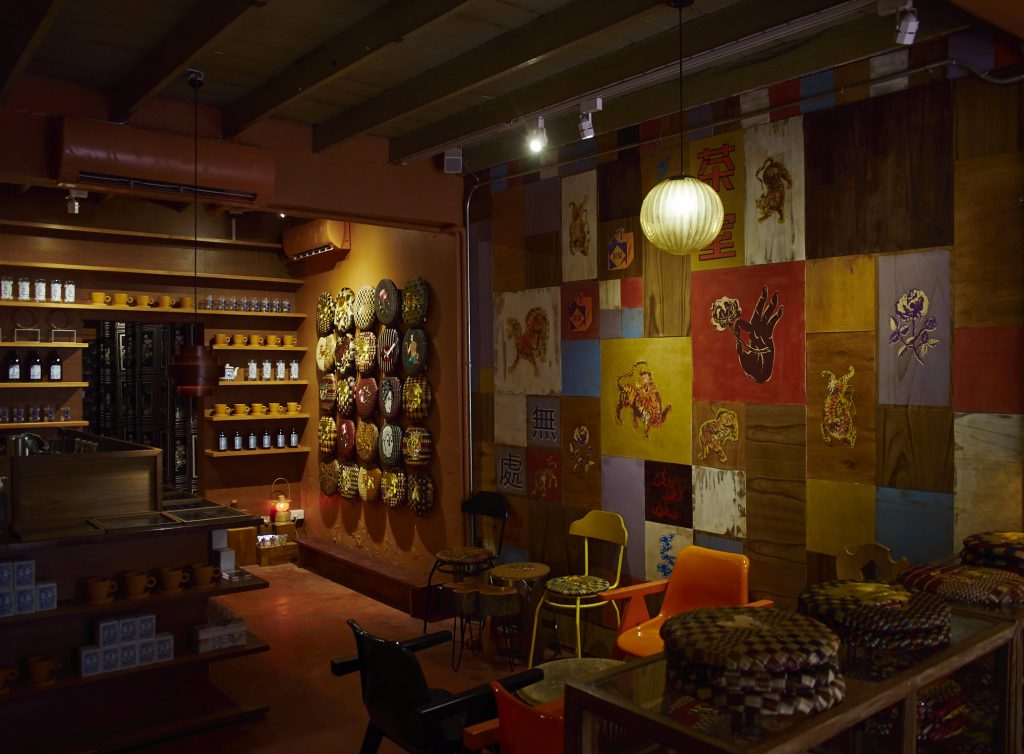

Q: What is happening with you?
A: “Citizen Tea Canteen” is my sixth organisation. The first is a creative studio called “56th,” which has been going on for eight years now. Next is the handicraft brand called “Citizen of Nowhere,” which is the work of those uncles and aunties in the rural provinces all over Thailand. Then the textile factory, which I am a co-founder with a 30-year-old sewing machine. The textile brand is called “One More Thing,” in which we collaborated with 20 other artists. The digital agency is called “The Continuum.” A restaurant called “Charm Kaeng” and the latest is this tea shop.
Q: Who is your design idol?
A: Would it be too corky if I say “none”? (Laugh).
I like Rei Kawakubo of Comme des Garçons. I’ve been studying her works for a long time and got a chance to visit her office in Japan. First, she is a very hard worker. She takes only five days off a year. She lives next to the office, arrives first, and leaves last. I like this working philosophy. I liked her first showroom since before she became famous. There was no mirror in her showroom. The client wouldn’t get to see how they look trying clothes on. I think it’s a very cool idea. The clothes should stimulate how they “feel,” rather than just how they “look.” She is a true rebel and I highly respect her.
As for Thais, I like Anake Nawikamoon (a famous “Thai stuff” collector and historian). I value him as a history collector, which is hard to find in Thailand. We should have many more like him, this country needs more data. I also like Pichet Klunchuen (an avant-garde dancer). He pushes the envelope all the time.
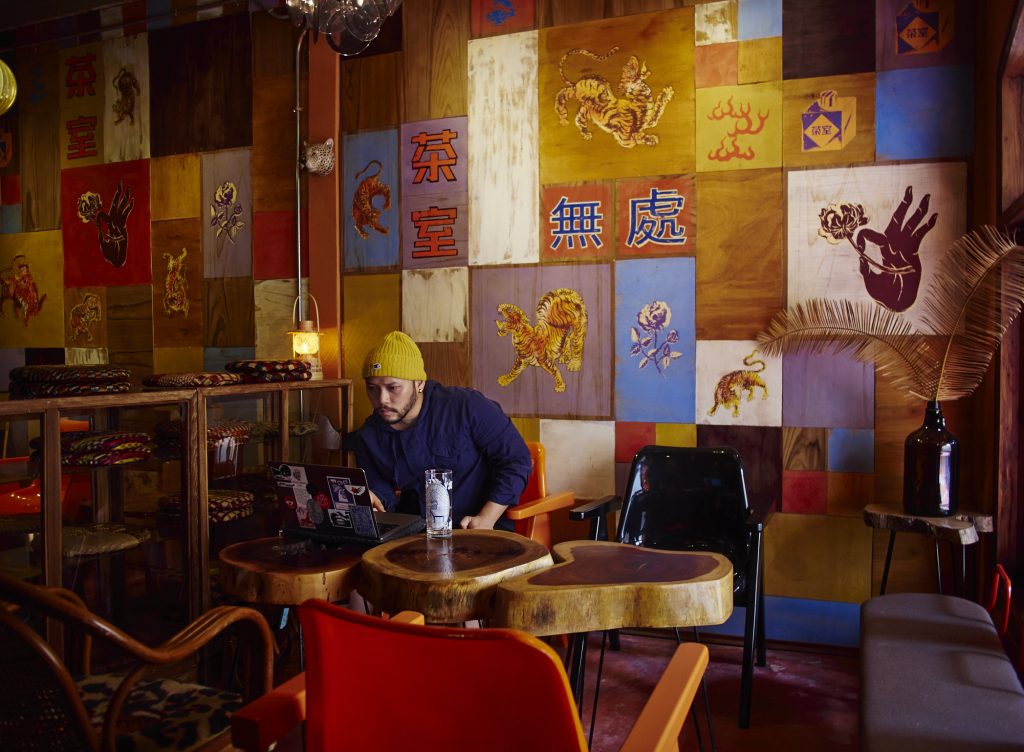

Q: You adapted things from their original. What do you think of the world-famous designers who took some Thai things and offered them just the way they are without any adaptation. (such as Thai boxing shorts, rubber flip-flops, etc.)
A: I think it’s just a different design language. The non-adaptation has its own shock value. Like cheap Sampheng’s bag, just twisted material a little bit from plastic to leather, but keep its shape and form exactly the way they are. If you change it too much, you lose that shock feeling. If you adapted it, then it became another language. I personally like them all. I think the more languages the better. Too bad the language is kind of limited here in Thailand. If you touch upon something of heritage, you might get in trouble.
Preservation for some means “don’t touch it,” which is just one way of preserving. You have to touch it too to preserve it, take it down from the altar or else it might disappear.
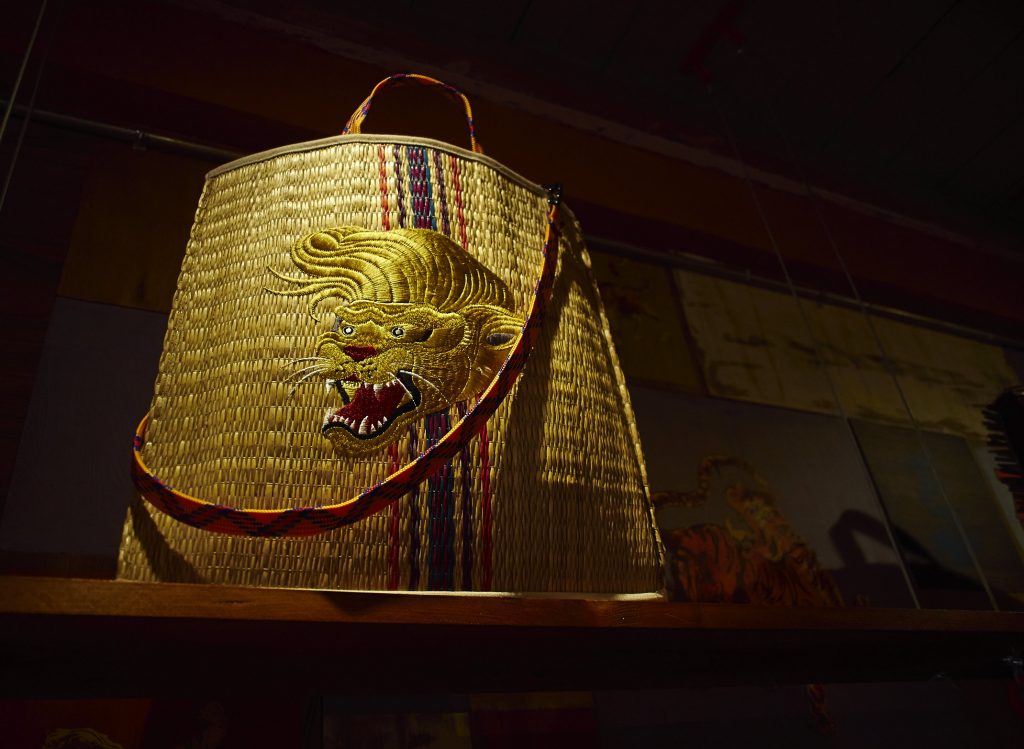

Q: Tell us about your thinking process before a piece comes out.
A: It’s pretty simple. There is a debate on form versus function. I don’t take any side. I focus on the story I want to tell first. I don’t consider myself a furniture designer. I think of myself as a communicator, a storyteller.
There was a political conflict between yellow shirts and red shirts. I had foreign friends read the news on Thailand to get their opinion from the outsider. They used the term “class issue.” It was the war of class. I wasn’t paying much attention to politics or class back then. But that triggered my interest in taking that class issue to use as my subject.
So the crate chair is directly about class. There is a very cheap thing combined with a very expensive thing. As simple as that. It is “very Thai” in my opinion. It was the first piece on this “class concept,” my thesis back in Sweden.
I was fortunate to get published in a foreign magazine for that. It became like my visa to get into the industry when I got back home. I also pushed it hard by sending stuff out here and there to get recognised. I didn’t know a thing about PR back then. I just wanted my work to be seen. And it snowballed from then on.
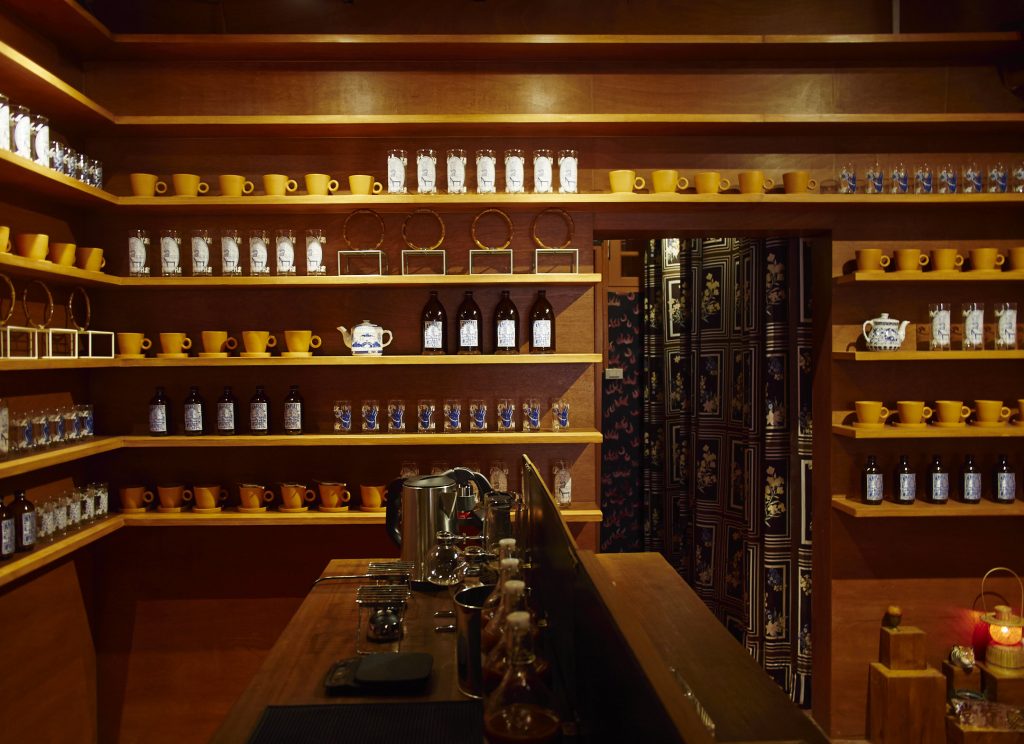

Q: That was pure back in school. How about as a pro? What about a compromise?
A: Ohhhhhh!!!!!! A lot!!!!!
Lucky, I am a kind that revered logic. Whenever in the meeting room with clients, their problem is always the first priority. There is nothing wrong with how the client chooses in the end. It’s their problem and I just get in there to solve that particular problem. I take my salesman hat on and off all the time. There is no struggling about it.
Since I now have businesses of my own, I understand even more about clients’ motives. What if that is my money, would I take the risk of creating something that seems too hard to read?
It’s not just my desire alone that counts. But I’m a pretty good convincer. I just use my logic. I would tell them the consequences of all the options on the table. I’ve been in the commercial world for a long time. So my logic is quite strong. I push my idea through most of the time because the client knows I took their problem as my priority. I can always take my hat off.
Q: Please give advice on marketing and how to succeed like Saran.
A: First is not to set your goal to succeed like Saran! Set your own goal and use your own weighing machine. Do not compare with others. The more you compare, the less likely you will be successful. The goal should be just what you really want to do, what you are very good at, and what is meaningful.
It comes one after another. You want to do it first, then you do it well and after that, you start to think about how to make it meaningful to other people, to the environment. That’s everyone’s journey.
Marketing is all about logic. You need to have a cautious mind. You know people are suffering now. You need to know how to communicate. It’s about constantly exposing yourself. If you see little, then you will not be very good at marketing.
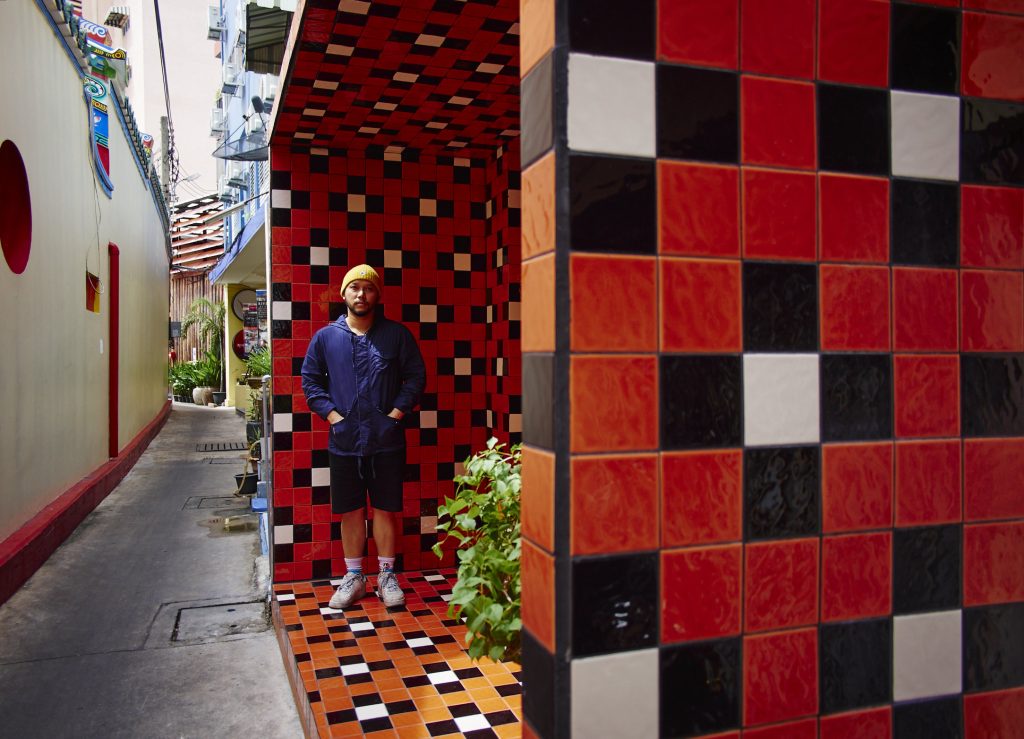

Q: Considering the highly successful work you’ve done in Sweden, why didn’t you think of starting your own design firm right after you returned to Thailand?
A: I didn’t think only a piece of design work is enough to jump into building a firm with a lot of people and responsibilities. I am also a big believer in learning within the system. Joining the ad agency or working at “HARNN” (Thai spa brand) gave me the opportunity to deal with the buyer department, which is another kind of people. The accounting and marketing departments are also another kind of people for me to get to know.
Q: Will the Thai versus Western theme go on and develop forever?
A: I have to make it clear that the word “theme” or “style” doesn’t mean much to me. The only thing I hold in my own design and business is I try to empower the underdog or the outsider. There will always be a culture of looking down on these people: that they are out, they are useless, or have no taste. So there will always be points I could pick up and say something about it.
It doesn’t matter if it’s Thai, Chinese, or Western. I could make my point about it all. It doesn’t matter how my voice sounds, but the core of it is: If you say this is bad, I would challenge you to take another look at it from a new perspective. Just like what I intended for this tea place as well.
Actually, there are quite a few projects I’m researching at the moment. One is that “Aunty Cheng’s odd miracle liquid” and a few other OTOP products.
I started the handicraft brand after spending enough time in the field to find out the real sustainability problems among those craftsmen. The question is why they can’t make enough to survive just making craft works they are good at? The system isn’t connected. The craftsmen and the client never met, so I am the middleman to link them together.
I’m interested in the everyday craft that they use in their real life, not some fancy stuff for city people. Everyday stuff has never been put in the spotlight, like local alcoholic drinks that have the same value as Japanese sake. Why they can’t make better sales or be popular? The more I research, the more I know it’s all about the false system. So I try to fight by picking up these things that they say are not good enough to prove they are wrong. It’s not easy at all.
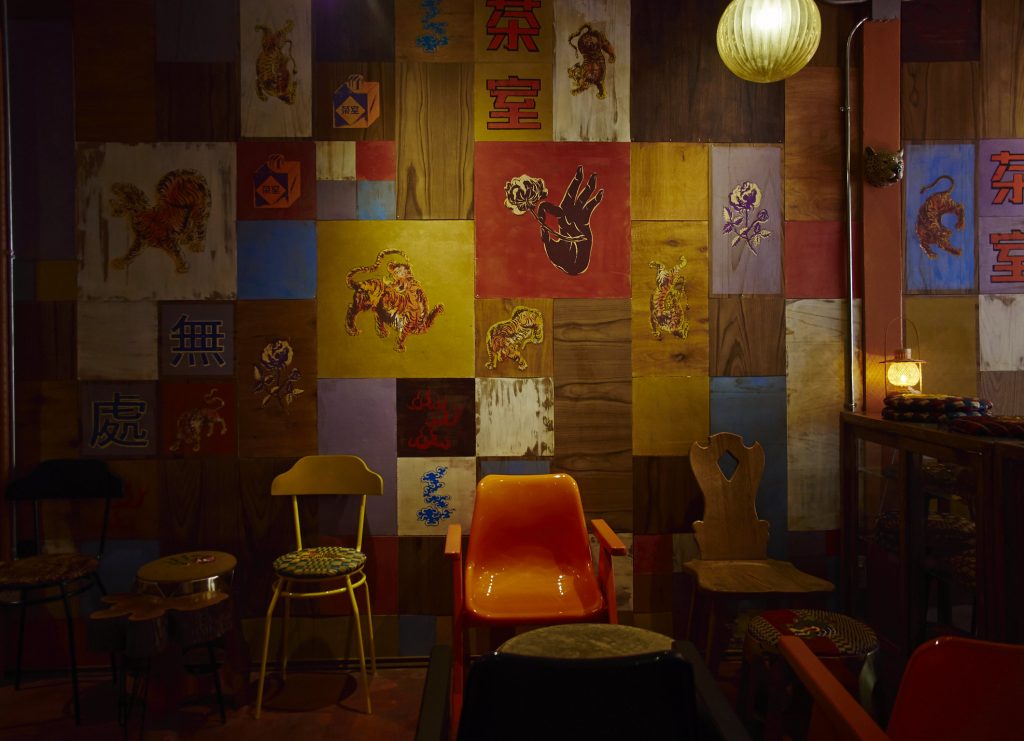

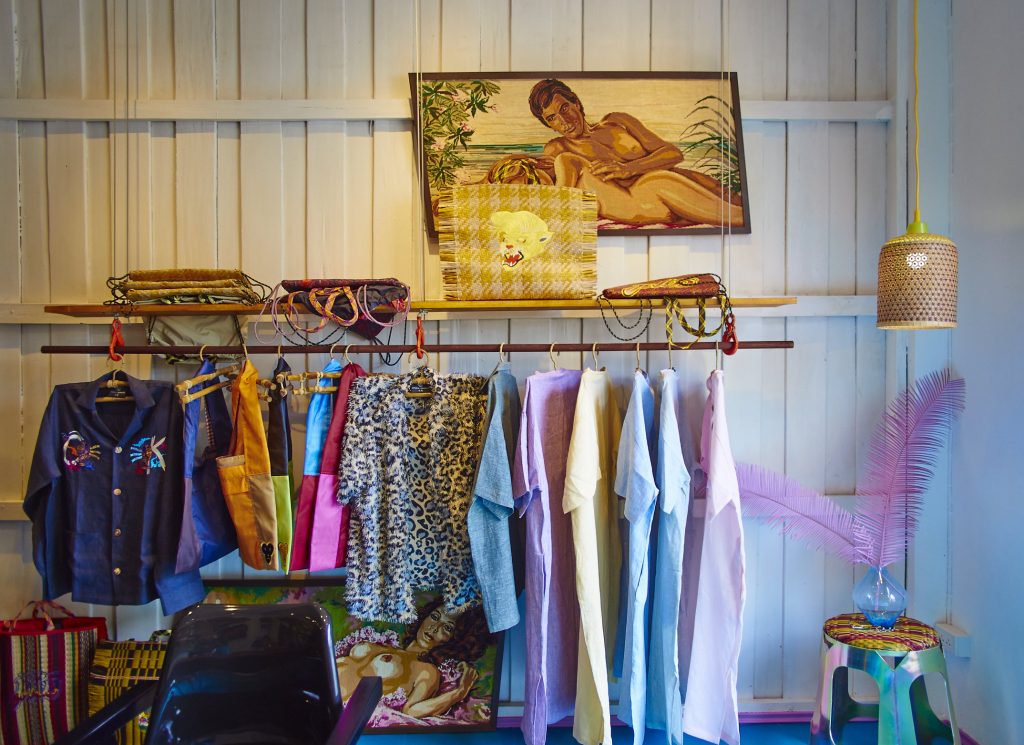

Q: How would you practically apply the “Industrial Craft” concept to local craftsmen?
A: Industrial Craft is a merging of handmade and machine-made, so it is practical in the real modern world. I strongly believe in this idea. Actually, locals don’t need any more development of their skills. The locals in Chanthaburi could make this mat blindfolded. I respect them for their skill and know-how. But if we are to move forward on Thailand’s craft industry, we need to connect everything from the origin to the end of the line, which is the customer.
The problem with Thai OTOP is that demand and supply have never connected. The locals never know who buys their products, when to sell them, how to sell, which channels, and what the design should look like. The locals are good at what they do, together with my design, which is in the middle. You can’t buy this design anywhere else. We’re not putting them on the mall store shelves because we want to sell them ourselves.
The end of the line is about marketing. With a new way of telling the story, which is this tea place, where I believe that if we connect the three parts together, it will last. The locals will have repeat orders, or else it will be a one-time buy like how it used to be.
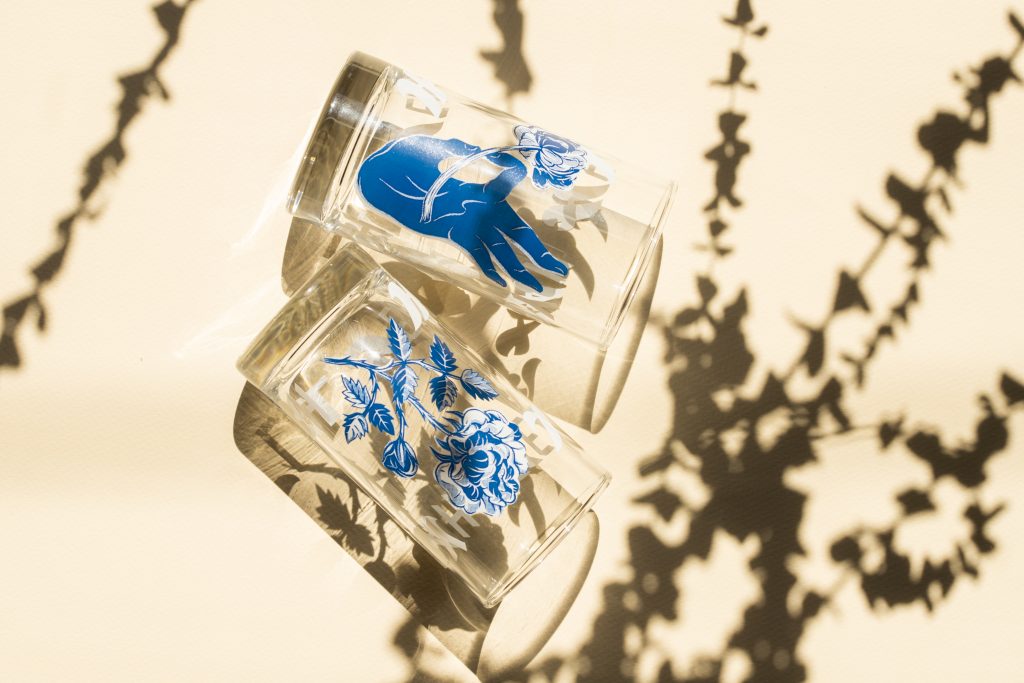

Available for online shopping, please see the end credit for more info.
Q: Once again on preservation.
A: Like Anake Nawikamoon, I admired him for his accuracy of history, which needs to be preserved. Keeping them exactly the same is one way of preserving that I respect. At the same time, as a creative person, I think preserving alone isn’t enough. What if people forget what we keep on the shelf? I wouldn’t call that preserving.
Preservation also means keeping them alive. If something is about to die and we insist on keeping it as it is, it will end up dead anyway. What I do is to smash it and break it down before I re-assemble it.
Q: Then wouldn’t people forget the original?
A: They shouldn’t have. First, if we get their attention to look, they might have questions on what this new thing used to be. And if they argue anything beyond that, it is their business.
Q: The Chinese opera or Thai Li-Kae haven’t had much attention for a long time. What would you do to fix that?
A: I did a project called “Alpha Opera” for a design week. I took all Asian opera cultures comprised of Thai Li-Kae, Chinese opera, and Japanese. We deconstructed them and made a new projection that millennial kids loved. They flocked to take selfies.
I think we need someone to stir up the still water, someone to deconstruct it, or else it will finally die. No kids will say to their friends: “Oh let’s go watch Chinese opera.” If we insist on keeping it as it is, it won’t last for a long time.
I think we really need someone to stir up, someone to keep the water dirty.
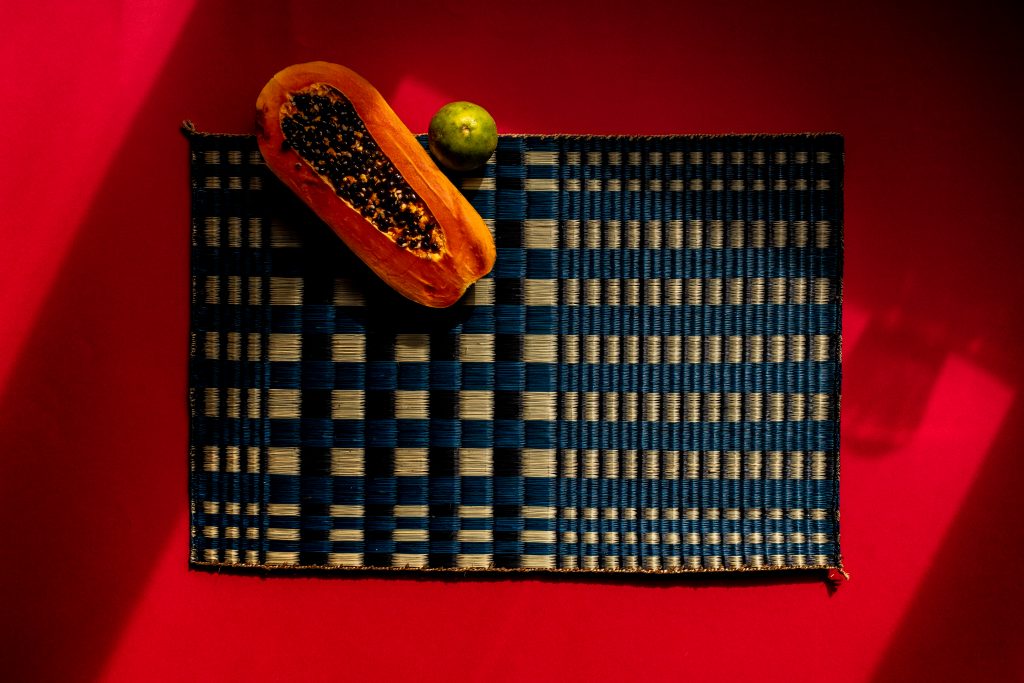

NOTE:
Due to the pandemic, the opening of the teahouse & showroom, Citizen Tea Canteen, is postponed until further notice.
All handicraft products by Citizen of Nowhere are available online at:
- Line My Shop: Citizen of Nowhere
- https://shop.line.me/@citizenofnowhere⠀⠀⠀⠀⠀⠀⠀⠀⠀⠀⠀⠀⠀⠀⠀⠀⠀⠀
- Free Shipping in Bangkok
- Shipping Worldwide ⠀⠀
Contact: ⠀⠀⠀⠀⠀⠀⠀⠀⠀⠀⠀⠀⠀⠀⠀⠀⠀⠀
- Line official: https://lin.ee/hfXLb2c
- IG: citizenofnowhere_craft
- FB: Citizen Tea Canteen of Nowhere ⠀⠀⠀⠀⠀⠀⠀⠀⠀⠀⠀⠀⠀⠀⠀⠀⠀⠀







Leave a Reply